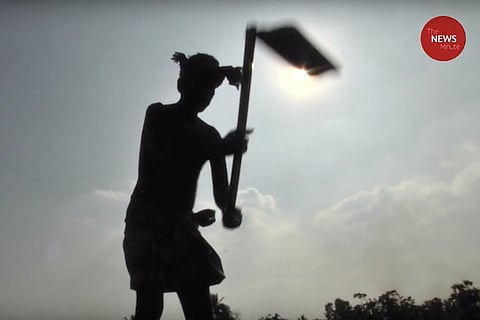

Multiple studies show that in the wake of a disaster, human trafficking and modern slavery are both devastating consequences in poor communities, made even more vulnerable. Reports suggest that there are several factors that make people more susceptible to traffickers in disaster-affected areas. These include - loss of homes, livestock, lack of food supply and weakened state infrastructure. All these scenarios presented themselves following the recent disaster that hit Tamil Nadu's delta region.
Cyclone Gaja that ravaged 11 districts in the state in November 2018, left 3.7 lakh people homeless and destroyed 3.4 lakh houses. It crippled agriculture and livelihoods in a fertile region, killed cattle and other livestock. Between 60% and 80% of the coconut trees in the region have fallen due to the strong winds, crippling the state's farmers.
In an investigation conducted by TNM, we visited Thanjavur district, one of the worst affected areas in the state. Here, 49-year-old Marimuthu, the father of three children shared a horrific tale of how he was forced to sell his own child after the cyclone destroyed his home.
"After the cyclone hit our district, we lost our house and with farms all destroyed, we had no livelihood. We did not even have enough food to eat and we were all starving. There was no roof on our heads and we were exposed to the harsh weather. I had to rebuild my home, so I took the money and sent my son to work in Nagapattinam district. He cried a lot but we were helpless,” said Marimuthu. “It was the broker who first approached us. He took my son saying that they will give him education along with the work but that was not the case. I thought he will be better off there than at home,” he added.
This family believes they were cheated by the trafficker and this only came to light when the child was rescued from the farm by district officials in Nagapattinam. He is currently residing at a government home for children in Thanjavur and is continuing his education. But activists and NGOs that fight trafficking on ground believe that others from the region may not be as lucky. Usually, these agents manage to get around 25-30 people over a year in these regions to shift to low paying jobs with long hours and harsh environments. This year, they expect the number to double.
"Their activity in these regions have increased exponentially following the Cauvery water crisis, when several farmers gave up on agriculture as an occupation. In the name of development also a lot of people were displaced. After Gaja, it is bound to further increase. With people's survival becoming a question mark, they are ready for any kind of employment," says Veerarajendran, farmer activist, Thanjavur district.